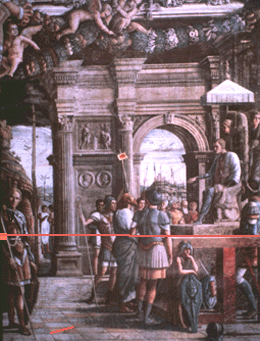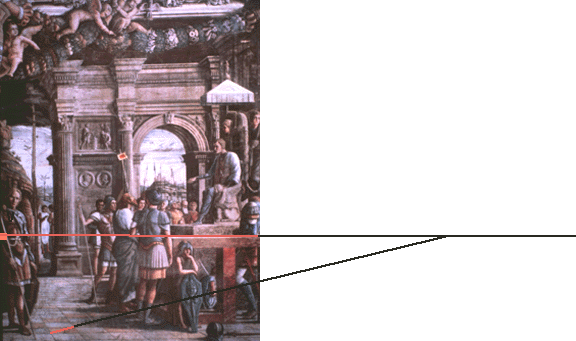
|
(a) First, find lines that are parallel to the picture plane. The only parallel lines in 3D whose images remain parallel to each other in perspective are those lines which are parallel to the picture plane. In this image, the front and back edges of the rows in the tile floor appear to be parallel to each other, and so in real life they would be parallel to the picture plane.
|
 |
(b) Use those to find orthogonals: Find lines which your experience of life in 3D tells you in real-life would be perpendicular to the lines you found in (a) and parallel to each other, but which aren't parallel to each other in the perspective image.
|
 |
(c) Use lines found in (b) to find the Primary Vanishing Point:
Extend the lines found in (b) until you find the one point where they all intersect. That point is the primary vanishing point
|
Conclusion 1: Viewers should place their viewing eye opposite this primary vanishing point.
Step 2: Find the Viewing Distance
 | (a) Are there any squares that are parallel to the "floor" or the "side wall"? If not, time to move on to some other plan. In this picture, the tiles are clearly square and parallel to the floor.
|
 |
(b) We're going to be looking for the vanishing point of a diagonal of the square.
|
 |
|
| (c) The distance between the primary and secondary vanishing points will be the viewing distance. |
Conclusion: Place your eye directly opposite the primary vanishing point; it should be the same distance back from it as the distance between the two vanishing points away.